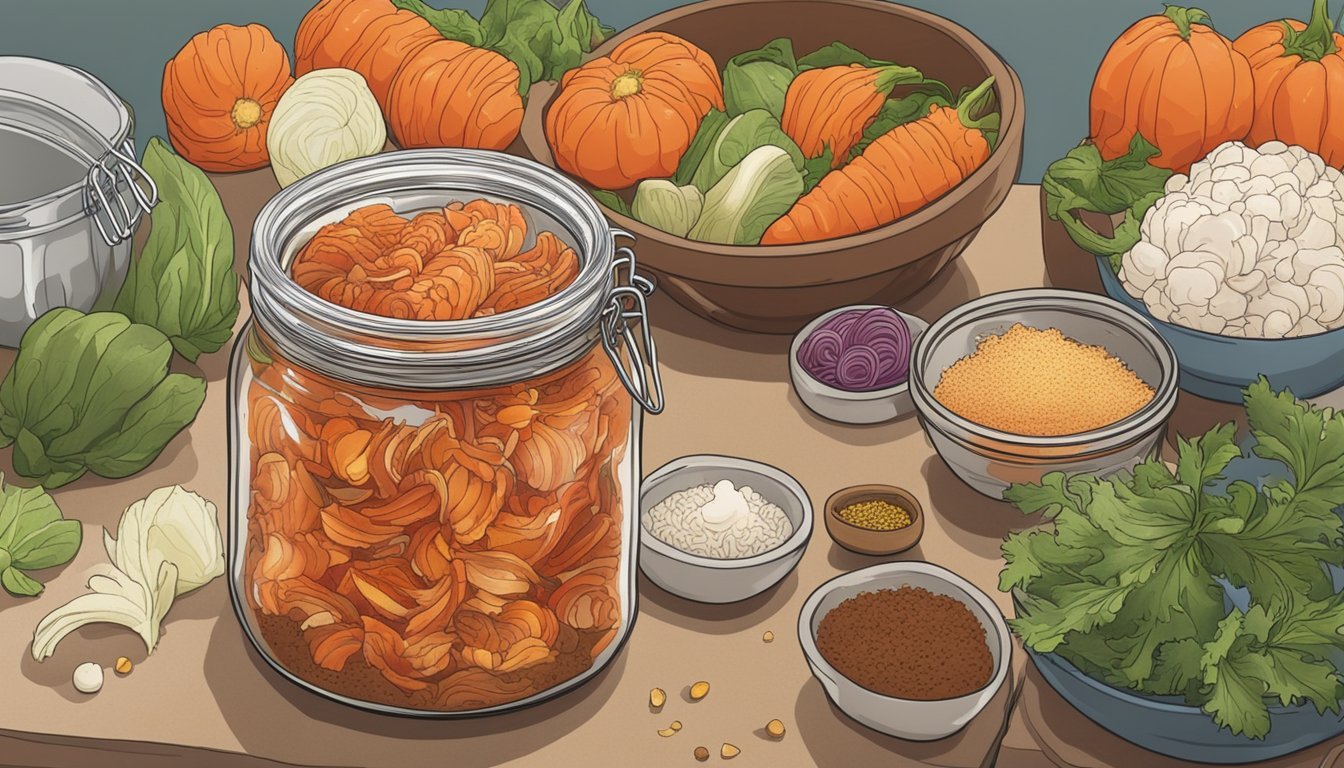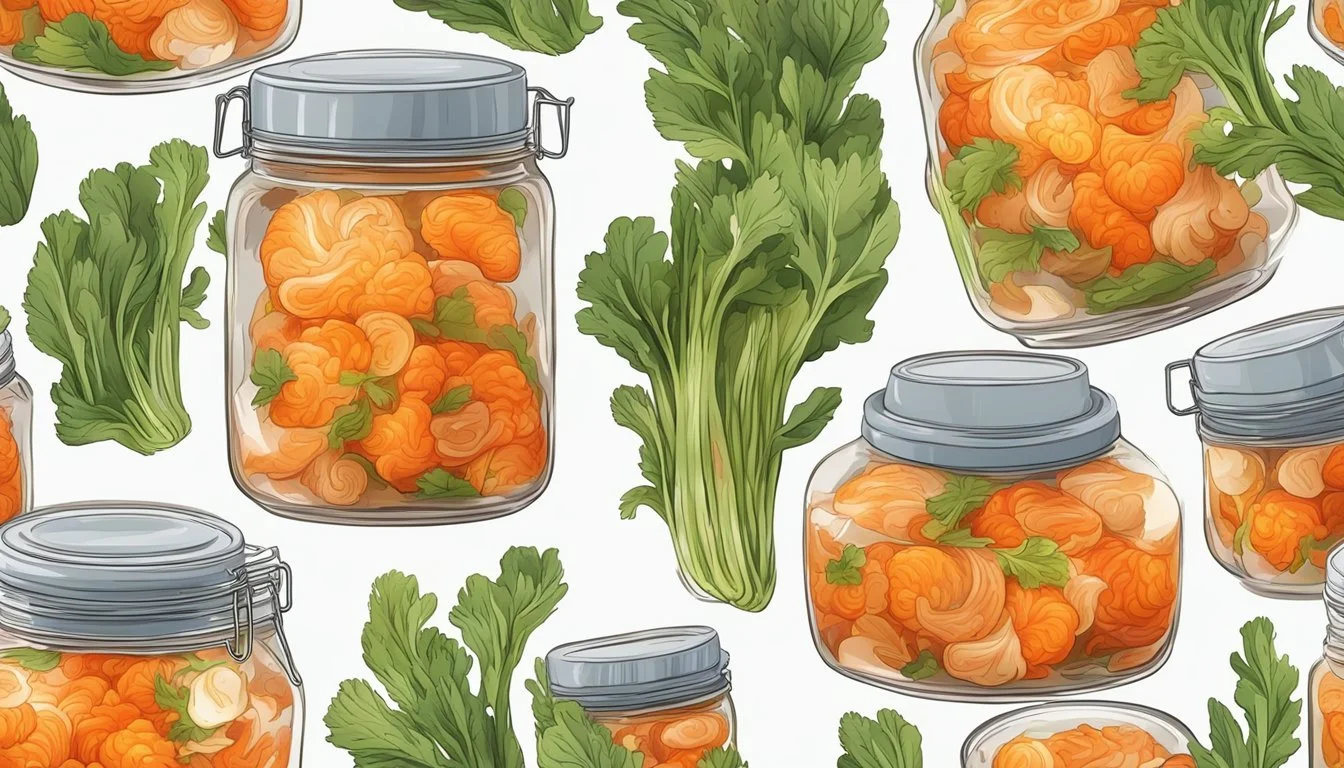Does Kimchi Go Bad?
Understanding Its Shelf Life and Spoilage Signs
Kimchi, a staple in Korean cuisine, is a traditional side dish made from salted and fermented vegetables, most commonly napa cabbage and Korean radishes, with a variety of seasonings including chili powder, garlic, ginger, and jeotgal (salted seafood). It is known for its distinctive flavor, which can range from sweet and tangy to intensely spicy. Being a fermented product, kimchi develops its character over time: its flavors and textures transforming and deepening. This leads to the common question, can kimchi go bad?
The longevity of kimchi depends on various factors such as the method of preparation, the ingredients used, and the storage conditions. Properly stored kimchi in the refrigerator can last for several months due to the lactic acid bacteria that act as a natural preservative. However, it is still possible for kimchi to spoil if it becomes contaminated or if it is stored improperly. Indicators of spoiled kimchi include an off-smell, mold, and an overly sour taste.
Consumers need to understand the difference between kimchi that has continued to ferment, resulting in stronger flavors, and kimchi that has actually gone bad, posing a risk for foodborne illness. While some people may prefer the taste of aged kimchi, it is crucial to inspect it for signs of spoilage such as mold or a foul odor. Identifying such spoilage is a key step to ensuring that kimchi is enjoyed not only for its taste but also with a consideration for safety.
Understanding Kimchi
Kimchi is a traditional Korean delicacy that undergoes a fermentation process, resulting in a range of flavors while offering health benefits. This section explores various facets of kimchi, from its origins to its ingredients.
Origins and Popularity
Originating from Korea, kimchi has been a staple in Korean cuisine for centuries. Its popularity has surged globally, becoming a beloved fermented dish around the world. Kimchi's unique taste and health properties have contributed to its international acclaim.
Defining Fermented Foods
Fermented foods, like kimchi, are foods that have undergone controlled microbial growth and fermentation. Fermentation involves the breakdown of food components through lactic acid bacteria, which preserves the food and enhances its nutritional value.
Ingredients in Kimchi
The primary ingredient in most kimchi is napa cabbage, although other vegetables such as radishes can also be used. The fermentation process typically includes a variety of seasonings, creating a complex flavor profile. Homemade kimchi ingredients might vary, offering a more personalized taste.
Health Benefits of Kimchi
Kimchi is rich in vitamins, minerals, and lactic acid bacteria, contributing to improved digestion and overall gut health. The fermentation process forms beneficial probiotics that support the immune system and may provide anti-inflammatory effects.
Kimchi in Korean Cuisine
In Korean cuisine, kimchi is more than a side dish; it is a cultural icon. It can be found in meals throughout the day, included in recipes from soups to pancakes, and enhances the flavors of countless Korean dishes. Kimchi represents the depth and variety of fermented foods in Korean cooking traditions.
How Kimchi Ferments
The fermentation of kimchi is a microbial process that transforms raw ingredients into a tangy, flavourful delicacy, extending its shelf life.
Fermentation Process
In the first stage of fermentation, kimchi undergoes a salting process to draw out water from the vegetables, typically cabbage and radishes. The salting step is crucial as it inhibits the growth of harmful bacteria and prepares the substrate for the main fermentation. The vegetables are then rinsed and mixed with a spice paste containing a variety of ingredients like chili powder, garlic, ginger, and often, a small amount of sugar. This mixture creates an anaerobic environment conducive to fermentation.
The main agents of fermentation in kimchi are lactic acid bacteria, naturally present on the vegetables or sometimes added in the form of a starter culture. These bacteria consume the sugars, converting them into lactic acid, which acts as a natural preservative. The process usually takes place at room temperature for a few days, after which the kimchi is stored in a cooler environment to slow down the fermentation and develop its flavors. The length of fermentation can affect the acidity and tanginess of the final product.
Role of Lactic Acid
Lactic acid is the by-product of the fermentation process and the primary substance that gives kimchi its distinctive sour taste. It plays a central role in preserving kimchi by lowering the pH of the mixture, which inhibits undesirable bacterial growth, thereby extending the shelf life of the product.
The production of lactic acid begins soon after the fermentation process starts and continues to increase as the bacteria break down more sugars. The increasing acidity enhances kimchi’s flavor profile and contributes to the development of its unique, tangy taste. The presence of lactic acid is not only crucial for the flavor and preservation of kimchi, but it also contributes to its status as a fermented health food, reputedly beneficial to digestion.
Proper Storage of Kimchi
Proper storage of kimchi is crucial for maintaining its freshness and extending its shelf life. The fermenting vegetables require specific conditions to preserve their taste, quality, and safety.
Refrigerating Kimchi
Kimchi should be stored in a refrigerator to slow down the fermentation process and keep it fresh. Homemade kimchi and store-bought kimchi benefit from refrigeration as it preserves the desired flavors and texture. Depending on the specific recipe and ingredients, the shelf life of refrigerated kimchi typically spans several months.
Using Airtight Containers
To store kimchi, it is imperative to use airtight containers. These containers help in preventing the kimchi from being exposed to air, which can introduce contaminants and promote spoilage. Sterilization of the containers before use is also recommended to remove any existing bacteria or molds that could affect the kimchi.
Shelf Life and Expiration
The shelf life of kimchi varies:
Type Shelf Life Homemade Kimchi Several months to a year Store-Bought Kimchi Date indicated on packaging
After opening, kimchi should be consumed before the expiration date. If the kimchi develops a sour taste, foul odor, or visible mold, it may have gone bad and should not be consumed. It is important to always check for signs of spoilage before eating.
Identifying Spoiled Kimchi
When assessing whether kimchi has gone bad, one should pay close attention to changes in taste and smell, texture and color, and look for any signs of mold and bacteria growth.
Changes in Taste and Smell
Kimchi typically has a tangy and slightly spicy flavor profile with a pleasant, fermented smell. Spoilage is often indicated by a sour taste that is excessively acidic, surpassing the usual tanginess. An off smell is another red flag; if the fermented aroma turns foul or overly pungent, the kimchi may no longer be safe to eat.
Texture and Color Indicators
Fresh kimchi maintains a certain level of crispness, and its color should be vibrant, reflecting the natural hues of its components. Spoilage can be spotted when the texture turns mushy or if there's an apparent discoloration. These changes can suggest that the kimchi is no longer at its optimal state for consumption.
Mold and Bacteria Growth
Mold growth on kimchi is a definitive sign of spoilage. Mold may appear as fuzzy spots of various colors. Consuming moldy kimchi could lead to foodborne illness, given the risk of ingestible mycotoxins. It is also crucial to consider the risk of cross-contamination, E. coli, Salmonella, and other harmful bacteria that can be present in spoiled kimchi. If mold or signs of bacterial growth are visible, it is best to discard the kimchi to avoid health risks.
Serving and Cooking with Kimchi
Kimchi, a traditional Korean fermented side dish, offers a unique flavor that ranges from tangy to spicy, making it a versatile addition to both cooking recipes and as a standalone accompaniment.
Kimchi as Side Dish
Kimchi often accompanies meals as a flavorful side dish, balancing a plate with its pungent, spicy, and slightly sour notes. The typical ingredients such as cabbage, radish, ginger, and garlic undergo fermentation, enriching the flavor. Preference plays a role in serving; some enjoy it fresh and crisp, while others favor a more fermented taste.
Kimchi Used in Recipes
This condiment's robust profile can transform a variety of recipes. For example, Kimchi Fried Rice marries the spicy tang of kimchi with the savoriness of rice, often enhanced with a fried egg on top.
Kimchi Stew (Kimchi Jjigae): It creates a hearty, spicy stew perfect for cold days.
Kimchi Deviled Eggs: A fresh take on a classic appetizer.
Kimchi Fried Chicken: Coating chicken in a kimchi paste offers a spicy, gochugaru (Korean red pepper flakes) kick.
Pairings and Preferential Usage
Kimchi pairs well with bland staples like rice to counterbalance its intense flavor. Its spiciness complements mild foods, while the fermentation aspect can cut through rich, fatty textures, adding a layer of complexity. Individuals' preferences for the age and the spiciness of their kimchi heavily influence its culinary use and pairing.




